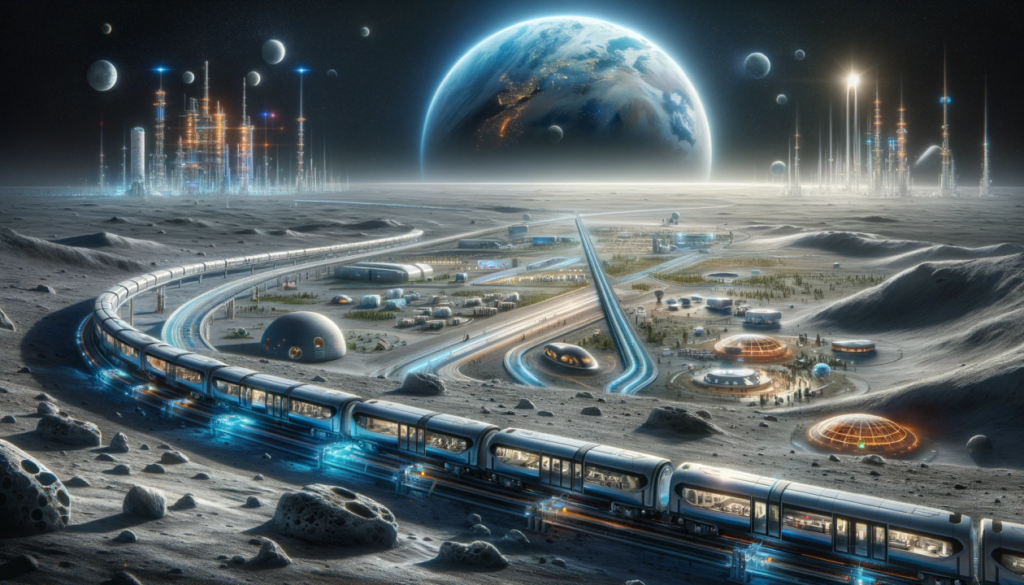The idea of constructing a railway on the moon might sound like a concept straight out of a science fiction novel, but you’re not alone in thinking that.
However, NASA’s Innovative Advanced Concepts program has recently allocated additional funds to six “science fiction-like concepts,” including the moon train.
The Flexible Levitation on a Track (FLOAT) project will utilize levitating magnetic robots to transport up to 100 tonnes of supplies across the lunar surface each day.
The team behind this Scalextric-like concept believes it will provide a reliable and independent method of transporting materials extracted on the moon.
Dr. Ethan Schaler, the project leader and robotics engineer at NASA’s Jet Propulsion Laboratory, emphasizes the importance of a durable, long-life robotic transport system for the daily operations of a sustainable lunar base in the 2030s.
“We aim to establish the first lunar railway system, providing reliable, autonomous, and efficient payload transport on the moon,” states Dr. Schaler in a NASA blog post.
Unlike traditional Earth-based railways with fixed tracks, this lunar transportation system proposed by Dr. Schaler and his team would utilize flexible track segments that can be easily “unrolled” directly onto the lunar surface.
The flexibility of these track segments allows for quick relocation if the moonbase layout changes, thus reducing construction time.
The actual movement along these tracks will be carried out by several “unpowered magnetic robots” that hover over the surface.
The power is generated by the rails themselves, akin to a floating Scalextric track.
According to Dr. Schaler, each robot will have the capability to move at a speed of approximately 1 mph (1.61 km/h) while transporting cargo of various sizes and shapes.
These floating carts won’t degrade the rails in the lunar environment, unlike robots with wheels or legs.
Although the notion of lunar bases may seem far-fetched currently, the prospect of establishing a permanent habitat on the moon is gaining traction.
NASA is set to explore and potentially land near the moon’s South Pole as part of the Artemis mission, driven by the belief that the moon’s craters may harbor ice.
Despite delaying the timing of its crewed lunar landing, NASA remains committed to establishing a human presence on our lunar satellite.
Jim Free, NASA’s assistant administrator for exploration systems development, has informed reporters that constructing multiple base camps is likely to be a crucial aspect of the Artemis landings.
Ultimately, NASA and other space agencies such as China and Russia may endeavor to build long-term lunar settlements.


